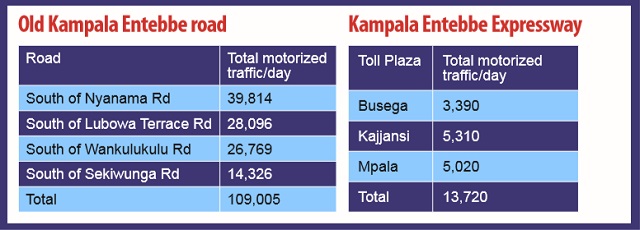
On May 16, 2019, Parliament passed the Roads Bill tabled in 2018. The Bill provides for collection of road tolls which are supposed to assist the government in paying off the loan used to construct the road.
The Expressway has three toll plazas and a total of 16 toll gates. The government still has to procure a company to execute the tolling. The Ministry of Works and Transport together and UNRA also have to agree on the levy.
There has previously been some criticism of the government’s decision to subject the road to tolling as a mechanism of earning money for repayment of the loan from China.
Fred Muhumuza, a member of the Ministry of Works committee that negotiated the Entebbe expressway repayment mechanism says it is dangerous to ask for a fee from the road users as a way of repaying the loan.
He says it means the road users will have to pay high tolls in order to pay the loan within the specified 13-year period. In his view, the government should repay the loan and charge users a lower toll over a longer period.
“The major aim of constructing the expressway was to provide an alternative route for Entebbe-Kampala road users since it has for long been congested,” Muhumuza told The Independent in an earlier interview.
President Museveni signed into law the tolling Bill. Since then, the tolling has been delayed because of delays in the procurement process for the tolling technology. That could be resolved soon because, according to the Commissioner for Public Infrastructure at the Ministry of Works and Transport, Edward Ssimbwa, the procurement and installation of the technology can now go ahead. He told The Independent in July that his Ministry has set end of the year as the possible starting date for the tolling system.
The jam continues
For now the traffic jam nightmare remains for most travellers to Entebbe from Kampala because most public transport has failed to switch to the expressway. That is partly because if the goal of the expressway was to decongest traffic between Entebbe and Kampala, two emerging issues show that the designers went about their mission in a very roundabout way.
The Expressway appears to have avoided tackling the worst traffic congestion spots which are between Kampala and Lweza along the old Entebbe Road. Here the traffic crawls at just 34km/h north according to a Travel Time Survey. At that speed and moments at peak hour when traffic stays still, one needs two hours to complete the 40km journey from Kampala to Entebbe Airport. The Travel Time Survey shows average travel speeds in both directions on the Kampala Entebbe Expressway to be 108km/h.
On the other hand, after Lweza, the Entebbe traffic is fairly smooth, with most drivers managing an average 57km/h in both directions south of Lweza on the old Kampala Entebbe road, according to the same survey. That makes venturing to the expressway almost pointless. It is not clear if this is by design or by accident.
Logically, it appears, the designers of the expressway should have focused directly on easing the traffic between Clock Tower in Kampala city and Lweza which is about 25km. But that, it appears, just might have spread-out the problem without solving it.
Instead, the Entebbe expressway was designed to run almost parallel but away from the old Entebbe Road. Each road ends up handling totally different traffic.
Most travellers to Entebbe now realise that the smartest way to get to Entebbe from Kampala is to find one’s way to the Northern Bypass, another expressway that forms a ring around the northern part of Kampala city. The set-up is such that connecting from the Clock Tower heavy traffic is quite convoluted and one has to make the decision to avoid it much earlier – before getting trapped in it.
Most public transporters might not make the decision because it means taking a longer route. But many travellers in a hurry will jump on it because, once one hits the Northern Bypass, arrival to Entebbe is usually less than 40 minutes. Of course a lot on how quickly one reaches the Busega junction, where the Entebbe-Kampala Expressway starts.
Since it opened, the expressway has attracted many admirers.
Phillip Sozi says driving to the airport using the expressway saves him 40 minutes to an hour of driving. Then there is also the reality of Entebbe as a favoured lovely destination for Kampala city residents hoping to laze-off the stress by relaxing in Entebbe; a cool Lake Victoria waterfront city with many shore points and beaches.
Beach goers particularly crowd Entebbe road over the weekends. Many used to set off from Kampala at midday hoping to reach their destinations at 3pm. But that is also about the same time travellers catching afternoon flights at Entebbe International Airport often chose to leave Kampala. The smarter travellers learnt to start driving as early as 10am to avoid mishaps. Many got caught up in traffic jams.
Diana Ashaba, a resident of Munyonyo who used to loath the congestion whenever she drove to Entebbe over the weekend is excited about the expressway. She says she now drives to her favourite waterfront resort in Entebbe in just 40 minutes. She says driving on the smooth road gallows her peace of mind too.
The government plans to build a Southern Bypass that will make a ring around the southern section of Kampala city. That might possibly bring more relief to the traffic within Kampala’s Central Business District.
****
 The Independent Uganda: You get the Truth we Pay the Price
The Independent Uganda: You get the Truth we Pay the Price


